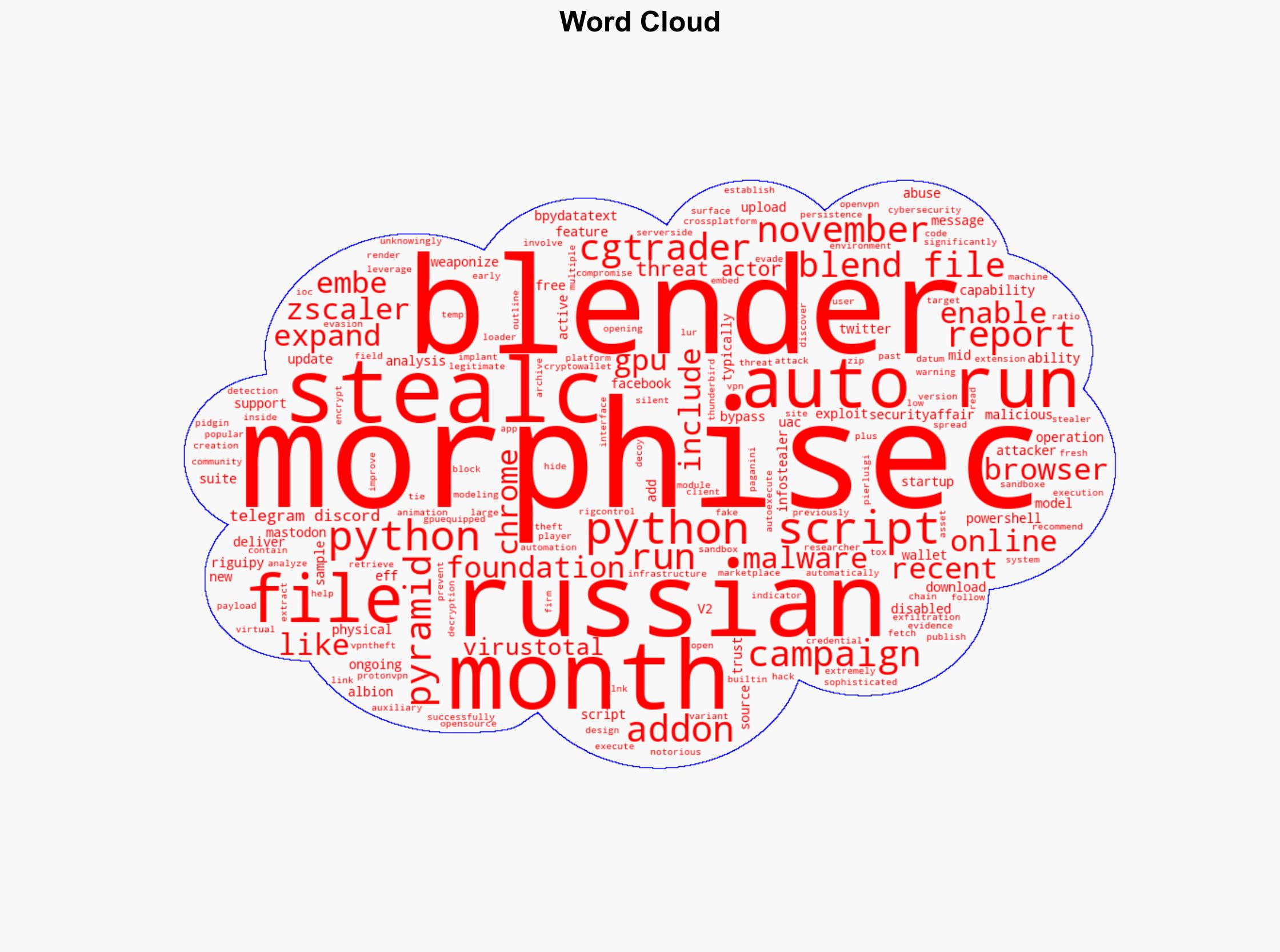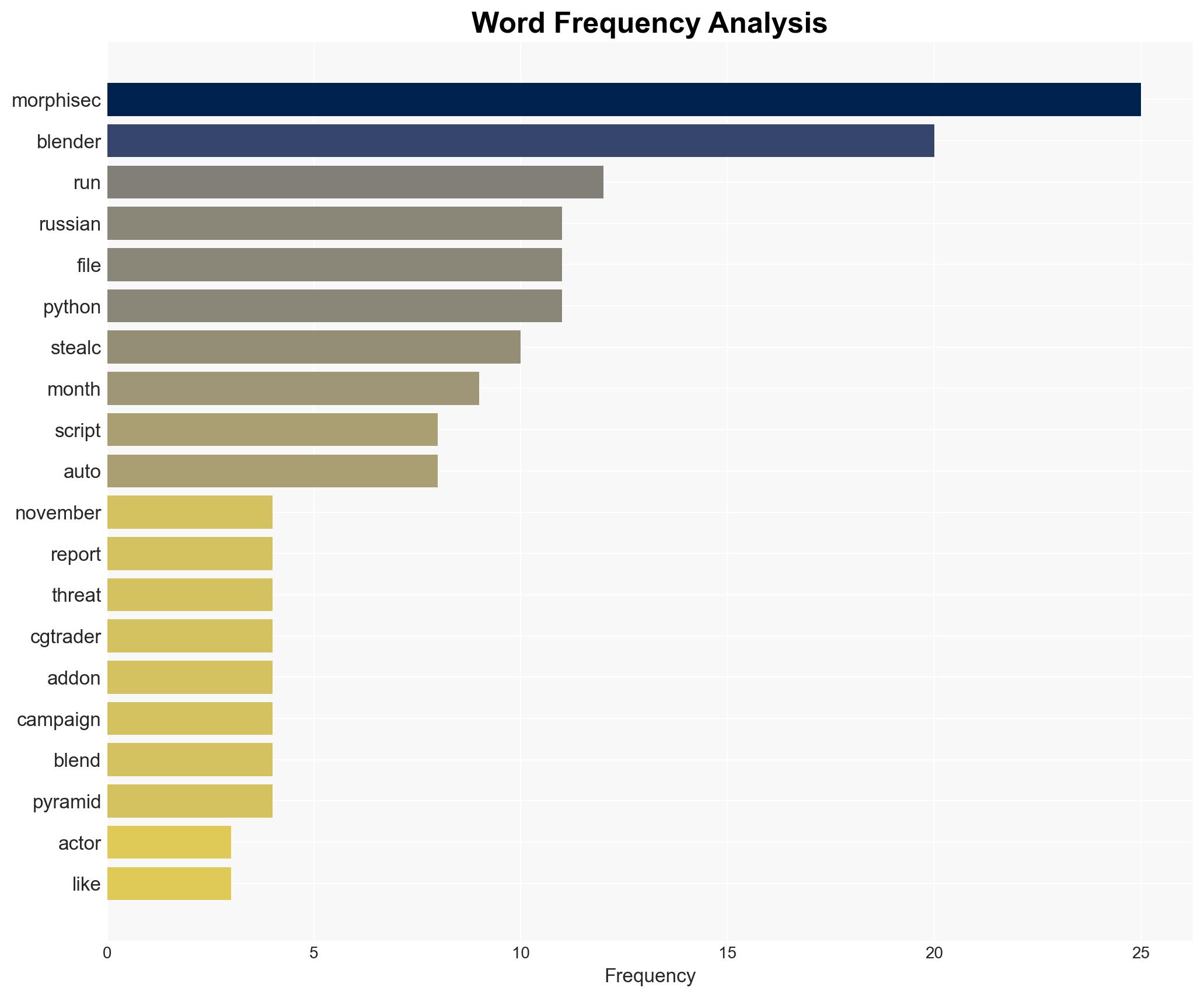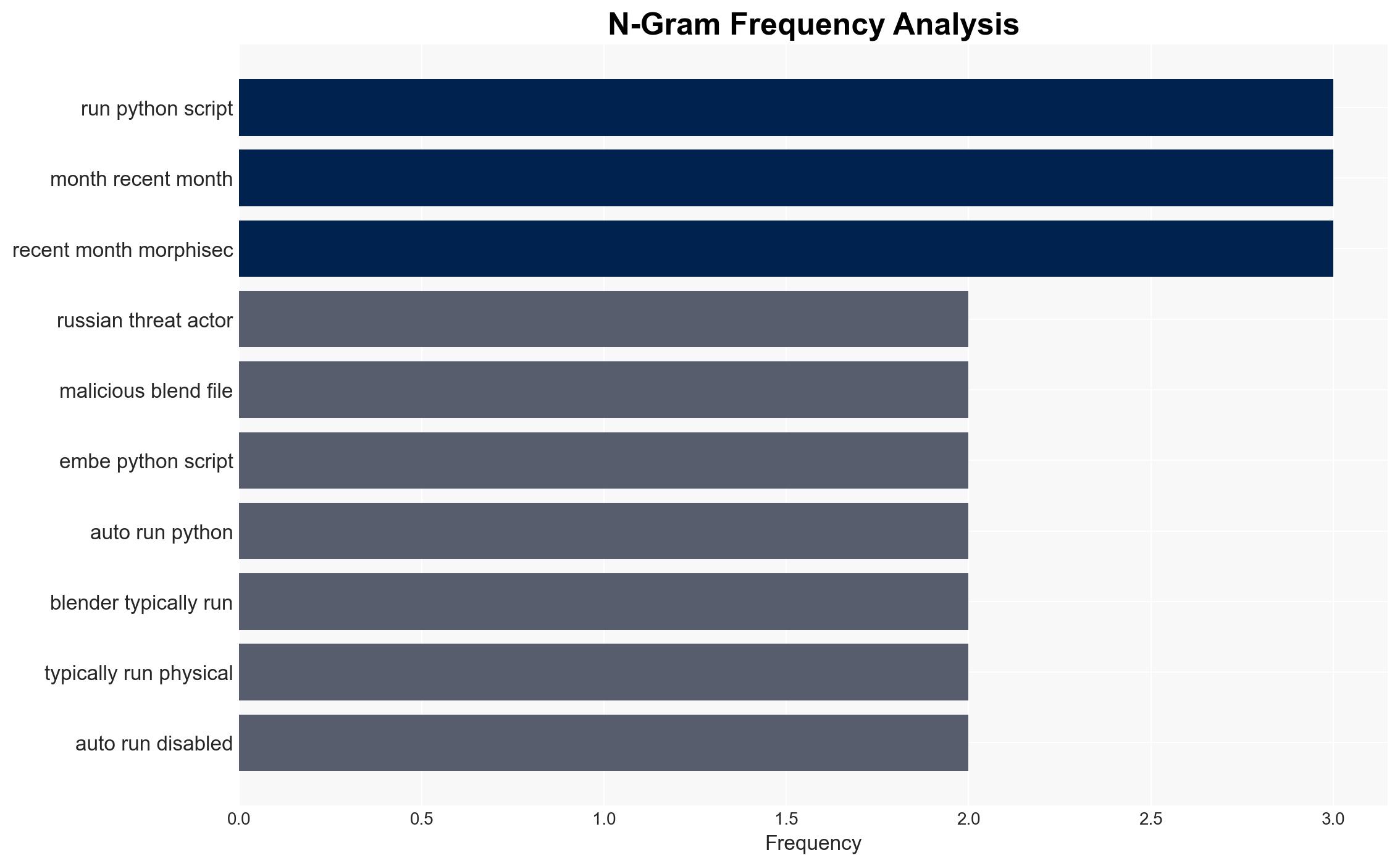Morphisec warns StealC V2 malware spread through weaponized blender files
Published on: 2025-11-25
AI-powered OSINT brief from verified open sources. Automated NLP signal extraction with human verification. See our Methodology and Why WorldWideWatchers.
Intelligence Report:
1. BLUF (Bottom Line Up Front)
The StealC V2 malware campaign, attributed to a Russian threat actor, is leveraging Blender files to distribute malware. The most supported hypothesis is that this campaign is part of a broader Russian cyber espionage effort targeting creative and technical communities. Confidence level: Moderate. Recommended actions include enhancing detection capabilities for Blender file manipulations and increasing awareness among users of 3D modeling platforms.
2. Competing Hypotheses
Hypothesis 1: The StealC V2 campaign is a targeted espionage operation by Russian threat actors aimed at extracting sensitive information from creative and technical sectors.
Hypothesis 2: The campaign is a financially motivated cybercrime operation exploiting Blender’s popularity to maximize infection rates for credential theft and financial gain.
Hypothesis 1 is more likely due to the sophistication of the malware, its low detection rate, and the historical context of Russian operations targeting similar sectors. Hypothesis 2 is less supported due to the specific targeting of Blender users, which suggests a more strategic intent than broad financial gain.
3. Key Assumptions and Red Flags
Assumptions: The threat actor’s primary motivation is espionage rather than financial gain. Blender’s open-source nature and script automation capabilities are being exploited without the platform’s knowledge.
Red Flags: The low detection rate of the malware could indicate advanced evasion techniques or potential insider knowledge. The use of legitimate platforms like CGTrader for distribution suggests a high level of operational security.
Deception Indicators: The campaign’s sophistication and the use of legitimate platforms may mask the true scale and intent of the operation.
4. Implications and Strategic Risks
The campaign poses significant risks to intellectual property and sensitive information within creative and technical sectors. If left unchecked, it could lead to broader cyber espionage activities, impacting economic and technological competitiveness. There is also a risk of escalation if the operation is linked to state-sponsored activities, potentially leading to geopolitical tensions.
5. Recommendations and Outlook
- Enhance monitoring and detection capabilities for Blender file manipulations and Python script executions.
- Conduct awareness campaigns targeting users of 3D modeling platforms about the risks of downloading files from untrusted sources.
- Collaborate with platform providers like CGTrader to implement stricter file verification processes.
- Best Scenario: The campaign is quickly neutralized, and preventive measures reduce future risks.
- Worst Scenario: The campaign expands, leading to significant data breaches and geopolitical tensions.
- Most-likely Scenario: The campaign persists at a moderate level, with ongoing efforts to mitigate its impact.
6. Key Individuals and Entities
Pierluigi Paganini: Cybersecurity expert reporting on the campaign.
Morphisec: Cybersecurity firm identifying and analyzing the malware.
Blender Foundation: Developer of the Blender software being exploited.
CGTrader: Platform used for distributing weaponized Blender files.
7. Thematic Tags
Cybersecurity, Cyber Espionage, Malware, Russian Threat Actors, Blender, 3D Modeling
Structured Analytic Techniques Applied
- Adversarial Threat Simulation: Model and simulate actions of cyber adversaries to anticipate vulnerabilities and improve resilience.
- Indicators Development: Detect and monitor behavioral or technical anomalies across systems for early threat detection.
- Bayesian Scenario Modeling: Quantify uncertainty and predict cyberattack pathways using probabilistic inference.
Explore more:
Cybersecurity Briefs ·
Daily Summary ·
Support us





